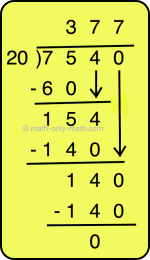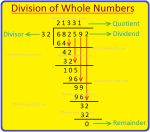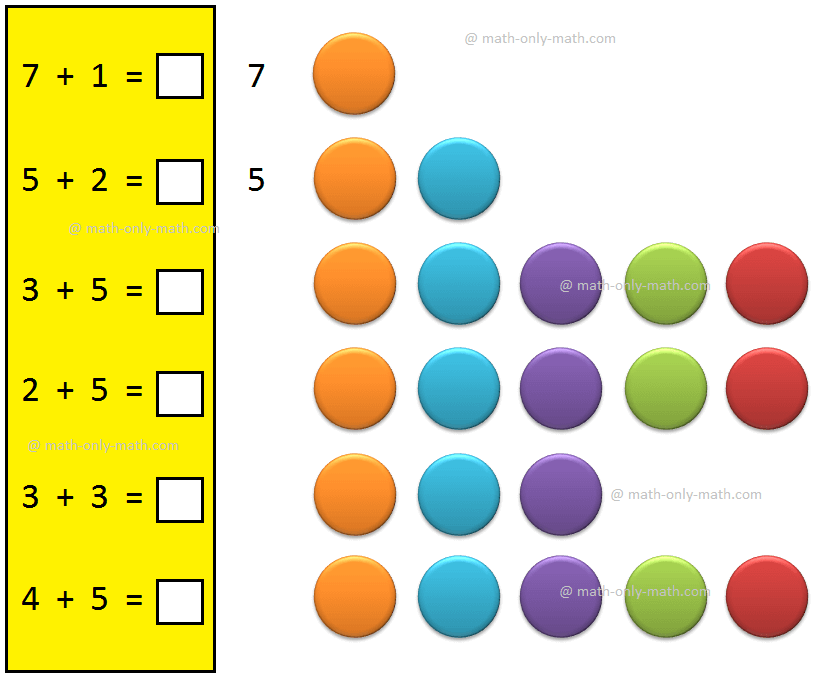Calculation of Income, Return and Number of Shares
We will discuss here about the calculation of income, return and number of shares.
Computation of income and return
If the number of shares held by a shareholder = n, rate of dividend = r% per annum and face value = F then
Annual income = nrF100
Annual return = annualincomeinvestmentinshares × 100%
Calculation of number of shares
To find the number of shares held by a person, we sue the following.
Number of share held = investmentinvestmentfortheshare(i.e.,FVorMVasthecasemaybe)
Or, annualincomeincomefromoneshare
Or, totalfacevaluefacevalueofoneshare.
Solved example on computation of income, return and number of shares:
1. Michael buys $ 100 shares at $ 20 premium in a company paying 15% divided. Find the MV of 200 shares, his annual income and his percentage income.Solution:
Market value of one share = $ 100 + $ 20 = $ 120
Therefore, the market value of 200 shares = 200 × $ 120 = $ 24,000
Annual income = Number of shares × Rate of dividend × nominal value or face value of 1 share
= 200×15100×100
= $ 3000
$ 3000 is the income obtained on investing $ 24000
Therefore, the percentage income = 300024000 × 100 % = 12.5 %
2. A man invests in shares for which we have the condition “7% of $ 100 shares at $ 120”. What is the annual income of a person holding 150 such shares? Also, find his annual profit percentage.
Solution:
“7% of $ 100 shares at $ 120” means that
The annual income from 1 share of NV $ 100 is $ 7, invest for 1 share being $ 120.
Therefore, the annual income from 150 shares = nrF100 = 150×7×$100100
= $ 7 × 150 = $ 1050.
His investment for 150 shares = 150 × $ 120 = $ 18000
Therefore, the required profit percentage (return) = $1050$18000 × 100% = 556%
3. Alexander bought some shares of $ 10 at par value which yields 10% divided per annum. At the end of one year he received $ 2000 as dividend. How many shares did he buy?
Solution:
Let the number of shares be n. Then
Annual income or dividend = nrF100
⟹ $ 2000 = n×10×$10100
⟹ n = 2000×10010×10 = 2000
Therefore, the required number of shares = 2000
● Shares and Dividends
- Share and Value of Shares
- Dividend and Rate of Dividend
- Calculation of Income, Return and Number of Shares
- Problems on Income and Return from Shares
- Problems on Shares and Dividends
- Worksheet on Basic Concept on Shares and Dividends
- Worksheet on Income and Return from Shares
- Worksheet on Share and Dividend
From Calculation of Income, Return and Number of Shares to HOME
Didn't find what you were looking for? Or want to know more information about Math Only Math. Use this Google Search to find what you need.
Recent Articles
-
Word Problems on Division | Examples on Word Problems on Division
Mar 13, 25 01:01 PM
Word problems on division for fourth grade students are solved here step by step. Consider the following examples on word problems involving division: 1. $5,876 are distributed equally among 26 men. H… -
Division of Whole Numbers |Relation between Dividend, Divisor Quotient
Mar 13, 25 12:41 PM
Relation between Dividend, Divisor, Quotient and Remainder is. Dividend = Divisor × Quotient + Remainder. To understand the relation between dividend, divisor, quotient and remainder let us follow the… -
Adding 1-Digit Number | Understand the Concept one Digit Number |Video
Mar 07, 25 03:55 PM
Understand the concept of adding 1-digit number with the help of objects as well as numbers. -
Vertical Addition | How to Add 1-Digit Number Vertically? | Problems
Mar 07, 25 02:35 PM
Now we will learn simple Vertical Addition of 1-digit number by arranging them one number under the other number. How to add 1-digit number vertically? -
13 Times Table | Read and Write Multiplication Table of 13|Times Table
Mar 07, 25 02:33 PM
In 13 times table we will learn how to read and write multiplication table of 13. We read thirteen times table as: One time thirteen is 13 Two times thirteen are 26 Three times thirteen are 39






New! Comments
Have your say about what you just read! Leave me a comment in the box below. Ask a Question or Answer a Question.